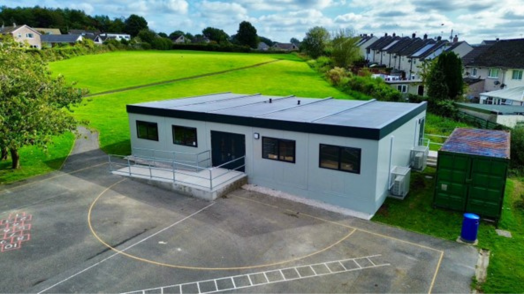Contact our friendly team for more information on our full range of buildings and how to start the process of hiring or buying a modular building for your business. Our expert team is always available to give advice, guidance or support.
Published: 17 June 2024 in Building Types
Flexibility In Education: Adaptable Spaces for Changing Needs

The latest School Capacity (SCAP) Survey, which gathers data from local authorities in England, reveals a significant challenge facing the education sector: 17% of primary and 23% of secondary schools are at ‘over capacity’. This statistic highlights the strain on existing school facilities and underscores the urgent need for solutions to accommodate the growing student population.
In light of this, the UK must explore innovative and efficient ways to expand school facilities and address these challenges. However, traditional construction methods are time-consuming and costly.
Here, we discuss how modular classroom construction can accommodate school expansion requirements and reduce the pressure on existing educational facilities.
Creating Adaptable Spaces with Modular Classrooms
Modular classrooms are prefabricated buildings manufactured off-site in a factory and transported and assembled on school grounds. They can be used as standalone classrooms, multi-classroom blocks, or even entire buildings, and they offer a viable and efficient solution to the problem of overcapacity. Here’s why:
Rapid Construction Timeline
One of the most significant advantages of modular classroom buildings is the speed at which they can be constructed and installed. Typically, traditional construction projects can take many months, often extending into years, which is impractical for schools needing immediate solutions. Modular classrooms can be manufactured and installed in a fraction of that time, allowing schools to address urgent capacity needs quickly.
Adaptability
Modular classrooms can be easily adapted to new teaching methods and technologies as educational needs evolve. Unlike traditional buildings, modular classrooms can be reconfigured with relative ease. Interior walls can be moved or removed to create different room layouts, accommodating various teaching methods and activities. This adaptability future-proofs schools and ensures they can evolve alongside changing education requirements.
Short- And Long-Term Cost Savings
Modular classroom construction is more cost-effective compared to traditional building methods. The off-site manufacturing process reduces labour costs, shortens project timelines, and minimises material waste, resulting in significant savings and an economically viable solution for schools working within tight budgets.
In addition to the initial cost savings, modular classrooms also offer long-term financial benefits. Their durability, low maintenance requirements, and ability to be repurposed, repositioned, and reused mean that schools can save on repair and upkeep costs over the building’s lifespan.
Minimal Disruption to Learning
Since modular classrooms are constructed off-site, the on-site assembly process is much quicker and less disruptive than traditional construction. This minimises the impact on the school’s day-to-day operations, ensuring that students and staff can continue with education uninterrupted and in a much safer environment.
Highly Flexible
Modular classrooms are highly flexible and offer both temporary and permanent solutions. Schools renovating or dealing with temporary enrolment spikes can use modular units as interim classrooms. Conversely, modular buildings can be designed for long-term use, providing durable and sustainable facilities that blend seamlessly with existing structures.
Completely Customisable
Modular classrooms can be customised to meet schools’ specific needs. From open-plan learning spaces to specialised rooms for science labs or art studios, modular construction offers a wide range of design possibilities.
In addition, modular classrooms can be designed to provide healthy and conducive learning environments. Features such as natural lighting, proper ventilation, and acoustical controls create spaces that enhance student well-being and academic performance.
Inherently Scalable
Modular classrooms are inherently scalable. Schools can start with a single modular unit, additional modules can be added as needed, and existing structures can be reconfigured to meet changing needs, creating a scalable solution that can grow with the student population. This saleability is particularly beneficial for schools in rapidly developing areas that must adjust to varying student numbers and ever-evolving educational requirements.
The SCAP Survey’s findings on school overcapacity highlight a pressing issue that requires immediate and practical solutions. Modular classrooms present a promising approach to expanding school facilities, offering speed, cost-effectiveness, flexibility, and quality. By adopting modular construction, schools can better accommodate the growing student population, ensuring all children have access to a safe and conducive learning environment. As the education sector continues to evolve, modular classrooms provide a sustainable and adaptable solution to today’s and tomorrow’s challenges.
Here at Springfield, we have been solving this growing problem for over 50 years with our industry-leading modular classrooms. Our off-site construction methods in a controlled factory environment offer all the benefits of a traditional build without the cost and time constraints.
To discuss a bespoke modular classroom project for your school, please contact our team. Alternatively, browse our ready-to-hire or purchase stock here.









